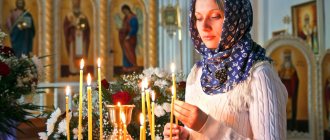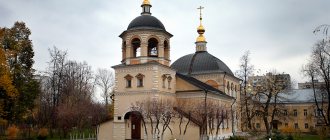A person who has taken the path of becoming a church member will come across the word “cleric” - who this is in Orthodoxy becomes clear from communication with a representative of the clergy. Attending divine services broadens the horizons of a lay person. And it happens that a person wants to join a community of people united in the clergy. The first stage to be overcome is the rank of reader.
Who is a cleric
In Orthodoxy, clergy are people who perform divine services in a church. The service is organized and conducted by priests who studied theology at a seminary or academy. The priests at the liturgy are served by clergy of lower degrees who have not received theological education in educational institutions.
Origin of the word
The concept of “cleric” is based on the Greek word κληρος. The translation has two options. In the first case, the lexical unit designated an object that was used to make a choice by lot. The second meaning of the noun is ownership of inheritance.
In the ancient world, lottery was used to select a person for a position from a group of equally worthy candidates. The procedure used equal amounts of black and white beans placed in one container. After the applicant's name was announced, a disinterested person removed one bean. The white fruit meant victory in the elections.
Meaning of the concept
In its semantic meaning, the word κληρος defines what happens without human intervention. The theory of probability plays the main role. The choice when solving a pressing issue occurs randomly, regardless of the will and desire of people.
“Cleric” also indicates belonging to a religious class in society. To be a cleric means to submit to God's will, which chose a person to serve the church. Clerics form a spiritual community called the clergy. Servants of Christianity are empowered to perform church services: preach the Word of the Most High and perform daily needs.
Notes[edit]
- https://www.bolshoyvopros.ru/questions/3415993-kto-takoj-bloger-klirik-chto-izvestno-o-klirike.html
- https://daily.afisha.ru/relationship/13299-poznakomtes-s-italyanskim-svyaschennikom-kotoryy-vedet-borbu-protiv-vladimira-soloveva/
- https://www.newsru.com/russia/22oct2019/solovey.html
- https://www.change.org/p/amministrazione-provinciale-di-como-italiani-non-lasciate-che-il-russo-goebbels-per-ottenere-la-cittadinanza-in-italia
- https://www.svoboda.org/a/30227918.html
Historical reference
Jesus Christ personally chose the first disciples. The twelve apostles begin to preach the Word of the Savior to the Jewish people. But there were not enough performers for missionary work. In the last year of the earthly life of the Son of God, 70 more people are chosen as followers of the gospel teaching.
The formation of the church hierarchy begins in the apostolic period of Christianity. There is a division of believers into laity and clergy. After the Resurrection of Christ, a new preacher was needed to replace Judas, who betrayed the faith. The choice was between Matthias and Barsabas. The lot fell on the first. At the same time, seven deacons are elected from among the seventy apostles. Their duties included monitoring the fair distribution of life supplies among Christians, who by that time numbered about 10 thousand people.
After the missionary travels of the apostles, groups of adherents of the teachings of the Son of God remained in cities and localities. The life of the Christian community was led by a bishop chosen by the disciples of Jesus. At the same time, presbyters were ordained, who, during liturgical meetings, performed sacred rites: prayers, baptism and communion. In early Christianity, a hierarchical difference was not yet visible between the apostolic proteges.
In the 2nd century, the organizational structure of the church was formed at local councils. In accordance with the structure of the church order, a hierarchical ladder is formed. The clergy is divided into clerics of higher and lower levels. Subsequent Ecumenical Councils, in which the primates of local churches participated, legislated the rules and norms for the life of the clergy.
Reader degrees
Reader is one of the levels of the table of clergy ranks. This is the first step in a church career, if you can talk about serving God. The initial degree of initiation into the priesthood implies the presence of an elementary supply of information and presupposes further advancement along the hierarchical ladder. In the early stages, the novice gains basic knowledge and practical experience.
Lowest
Sometimes, in order to gain initial experience before becoming a reader, a young parishioner performs the obedience of a priest. The job title is made up of the Greek words “wax” and “to wear.” The duties of the candle bearer include carrying a tall candlestick with a lit candle during the service. At the procession of the cross, laymen see banners or icons in the hands of the priests.
A candidate to become a cleric goes through a ritual called “ordination.” During the church service, initiation into the position takes place. The bishop who conducts the ritual blesses the vestment in the surplice. In the Orthodox Church, boys from the age of ten serve as candlebearers.
Higher
The intermediate level between reader and deacon is the title of subdeacon. This is a cleric who does not yet belong to the clergy, but is no longer considered to belong to the lowest rank of clergy. The duties of the subdeacon include serving the bishop during the rite.
During service, the assistant:
- wears dikirii and trikirii, as well as ripids;
- spreads the eagle;
- helps the hierarch put on his clothes during the service;
- washes the priest's hands.
A subdeacon may undergo the rite of ordination or be blessed for a one-time performance of duties. A minister ordained to the rank of subdeacon is allowed to touch the altar and the Altar in the altar and carry sacred vessels with the Holy Gifts. An orarion is placed crosswise over the shoulders over the surplice, symbolizing angelic wings.
What then does the word “clear” mean?
In general, all ministers of the faith make it clear. This:
- priests (priests in folk style),
- deacons (ministers who help the priest, but cannot yet manage the ministry themselves),
- subdeacons (assistants to deacons),
- readers (i.e. clergy),
- sacristan (officially these are guards, as well as a bell ringer - they also serve worship and sing in the choir),
- senior singers (choral conductors, that is, choral conductors),
- treasurers, as well as heads (in the old fashioned way - church guardians) of temples.
The word “clear” has an even lesser-known synonym: “clergy.”
In the old days, singers were also classified as clergy, but today they are not. Now only dedicated people are officially members of the clergy.
But what is a choir? In Orthodox churches this is a place for readers and singers. This is the embodiment of that part of heaven where angels sing the glory of God.
And finally, we traditionally offer a video - short, but very informative. It is registered with the Cathedral of the Holy Spirit. This is a sermon that talks about the miracle of faith, as well as about the blind cleric:
How to become a reader in a temple
A reader is a low-ranking cleric who reads books of Holy Scripture other than the Gospel during a church service. In the ancient world, people who openly declared faith in Jesus Christ, and also knew how to read the text correctly and skillfully, were appointed to the position of reader. They were entrusted with keeping the sacred books. During the service, the readers lit lamps in the altar, which they carried in front of the presbyters on necessary occasions. It is known from history that Emperor Julian the Apostate was a reader in his youth.
Who can become
Since the reader is the first step in the church hierarchy, only males are allowed to be initiated into this rank. The collection of Orthodox laws “Nomocanon” sets the lower age limit for a candidate at fifteen years. The desire to devote your life to God should be discussed with the rector of the church where service in the choir is expected.
To receive the rank of reader, a young man undergoes the rite of laying on of hands. Hirothesia is performed before the start of the liturgy in the center of the church. The subdeacons bring the protege to the bishop, who makes the sign of the cross three times over the candidate, lays his hand on his head and reads a prayer. The future reader is put on a short veil. A young man reads a passage from the Acts of the Apostles. Then the vestment of the surplice occurs. The ceremony ends with the presentation of a candle to the newly minted cleric, with which he stands until the end of the liturgy.
Requirements for Acceptance
The books read at the service are written in Church Slavonic. Therefore, the reader must be able to read and understand the ancient language correctly. They receive knowledge at a parish school or study educational materials on their own. Constant practice is required.
A young man enrolling as a reader should master the Liturgical Rules. Knowledge of the contents of church books and the ability to quickly navigate through them helps to quickly find the right place in the text.
The main books used by the clergy:
- The Book of Hours is compiled from the prayers of the daily service circle;
- troparia to the saints are collected in the Menaion;
- the Octoechos contains texts of prayers for each day of the week;
- The Apostle talks about the life of Christ's disciples after the Resurrection and contains apostolic epistles;
- the Lenten Triodion contains the hymns of Great Lent;
- the colored Triodion contains hymns from Easter to Pentecost;
- The Typikon gives instructions on how to correctly combine prayers from liturgical books.
A candidate reader must have public speaking skills. A loud voice and controlled breathing are mandatory attributes of a church speaker. Severe speech defects are not acceptable. The result is achieved through daily training under the guidance of an experienced teacher.
Responsibilities and rights of a cleric
The main responsibility of clergy in the Orthodox Church is to conduct church services, at which repentant, petitionary and thankful prayers are offered to God. In addition, there are norms and rules that must be followed by a clergyman in everyday life. The general principle is this: everything that is prescribed for a candidate for the clergy must be carried out after the rite of ordination.
A church cleric assigned to a specific parish does not have the right to leave the place of service without permission. The shepherd is obliged to live in his community, despite natural disasters and social upheavals. The priest must suppress attempts to introduce into the church anything inappropriate in rituals, singing and reading of liturgical texts. The pastor ensures that parishioners do not use church items in housekeeping.
A clergyman should wear clothing appropriate for clergy. It is forbidden to wear bright and expensive suits or military uniform. The cleric is obliged to avoid entertaining social events, and not to stay at the holiday with parishioners longer than required by the fulfillment of his priestly duty.
In the ancient church, when followers of the teachings of Jesus Christ were persecuted, the clergy had the only privilege - to be the first to suffer for the Word of God. Starting from the 4th century, Orthodoxy became the official state religion. At church councils, hierarchs establish rules governing the life of the clergy, including the rights of priests.
The privileges of clerics included:
- Civil immunity. For the crime committed, the priest was brought before the church court first of all.
- Public immunity exempted people from military service, paying taxes and serving in government agencies.
- Canon law. A person who encroached on the integrity of a clergyman was excommunicated from the church and anathematized.
- Privilege of honor. In mutual relations, the cleric of senior rank enjoys preference.
- Strong responsibility. The property of priests, which provides material wealth, is not subject to seizure and collection for debts.
At the present time, there is no division of society into classes, and the clergy has no advantages over the laity from the point of view of civil legislation. The only privilege remaining from time immemorial is the right of honor in church life. This means that laity, clergy and deacons seek blessings from elders and bishops, and elders are blessed by bishops. The seniority of clerics of the same rank is determined by the time that has passed since consecration or consecration.
What is clear
The Orthodox Church consists of two classes of believers. One group of people is called to preach the Word of God, the other participates in divine services and receives the Holy Gifts. The first are called shepherds, who spiritually care for the second part of human society - numerous parishioners. Some lead the life of the Christian community, others promote the flourishing of faith. But all members of the Church have the same opportunities to be saved and enter the Kingdom of Heaven.
The clergy as a social stratum consists of professional clergy. In the synodal era of Tsarist Russia, the ministers of a particular parish were called clergy. Priests - bishops, presbyters and deacons - belong to the highest rank of clergy. The grace of performing divine services was received by them through the ceremony of ordination. The lowest level of clergy, who are called clergy, includes readers and singers. Their ministry begins after consecration. The rite of laying on of hands by the bishop takes place outside the altar.
People don’t come to serve in church out of idle curiosity. Giving life to God is a conscious choice of a person. The path of a clergyman is thorny and often life-threatening. But the good calling of bringing peace to human souls helps to overcome the difficulties that await the cleric.
Order of ceremonies
The order for the ecclesiastical rite of placement as reader is with the Episcopal Clergy Officer. Ordination as a reader usually takes place in the church at the beginning of the liturgy, either immediately after the bishop is vested on the pulpit or on the altar (during the reading of the hours), or already during the singing of the antiphons. (in the center of the church):
- A minion (or group of minions) in a belted cassock leaves the altar through the deacon's door, approaches the bishop in two rows and bows to the ground three times.
- The bishop of each trisht places a cross in accordance with the head (candle dedication), and then, placing his hand on the head, says the first prayer: Who are all the creatures that illuminate your miracles with light...
- Initial prayers, troparia to the apostles, saints John Chrysostom, Basil the Great, Gregory the Theologian, “Glory..., And now,
- Viewfinder cropping,
- Dressed in a short criminal,
- The bishop for the second time (the reader's actual position begins) blesses three times and places his hand on the head of the henchman/minions with the prayer: Lord God Almighty, choose your servant and sanctify him,..
- Reading of the consecrated apostle, veneration of the bishop,
- Having removed the felony,
- The third triple blessing given by the bishop,
- The bishop overshadowing the temple on the cross,
- Reader's dress/reader's dress with cape,
- The Bishop's Instruction on the Duties of a Lector,
- Blessing from the Lord, naming a specific temple (usually where the dedication was made) by the reader),
- Presenting the reader(s) with a lamp (candlestick with a candle),
- If the newly installed reader is not subsequently ordained subdeacon, then he (or a group of newly appointed readers) turns to the altar, crosses himself, bows, then turns to the bishop, bows to him and follows him in two columns in the altar through the deacon's door,
- Introducing new readers to the laity at the next liturgy,
- Congratulations on the dedication and ceremonial presentation of the reader's diploma.








